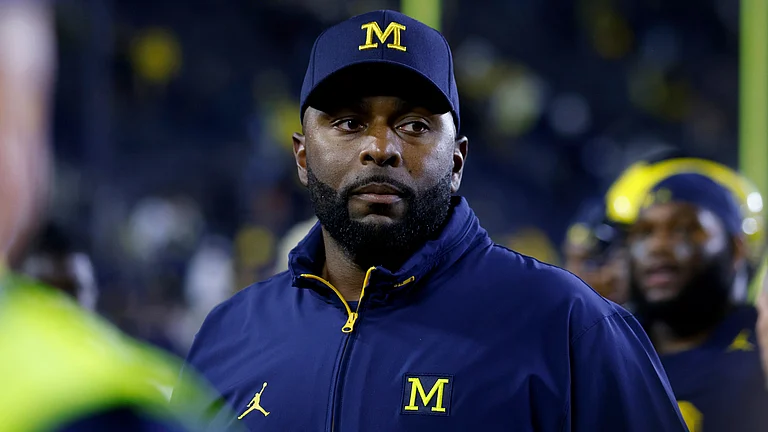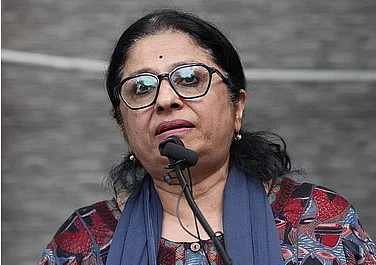In 1505 CE, at a time when European powers were building their empires in Africa and Asia, a Portuguese fleet arrived in Galle, Sri Lanka. Renowned for its spices and pearls, the South Asian Island nation had been conducting commerce for centuries “for the benefit of all”. Upon taking power, the Portuguese changed all this, imposing monopolistic trade practices, building fortresses, and converting locals by force to Catholicism.
The Portuguese slowly turned the King of Kotte, the political centre of the country, into a vassal. Upon his death in 1597, they obtained control of the kingdom. By then, several factions were making claims to the throne. Defying Portuguese rule, they made attempts to establish alternative centres of power in other regions. Most of those attempts failed. One, however, succeeded, upsetting European plans for complete domination.
This was the Kingdom of Kandy. Founded in 1474 CE, before the arrival of the Portuguese, the Kandyan kingdom gained a new lease of life in 1591 when a Sinhalese nobleman groomed by the Portuguese established himself as heir to the throne. Having thwarted his benefactors, he legitimised his rule in the region until he died in 1604.
For the next 200 years, Kandy became “the last stronghold of the Sinhalese kings.” Isolated from the rest of the country, it stood on thick jungles and rugged mountains. These served as natural fortresses, keeping European conquerors at bay. Indeed, the Portuguese, the Dutch, and the British in their initial phase faced one spectacular defeat after another and found it difficult to match the tactics of their adversaries. Yet their intrusions and blockades spelt out a precarious political situation for the region. Under these conditions, the kingdom slowly began to evolve an identity of its own.
The Portuguese had virtually stamped out Buddhism from Kotte through forced conversions and the destruction of places of worship. The Kings of Kandy saw themselves as heirs to a lost tradition and set about restoring their faith in their dominion. Yet unlike their predecessors in the Anuradhapura (437 BC-1017 CE) and Polonnaruwa (1055-1232 CE) kingdoms, they had little access to the raw material required to construct giant monuments and edifices. Facing economic blockades on one end and the threat of military incursions on the other, they had no choice but to be spare and economical.
The Sri Lankan anthropologist Gananath Obeyesekere has commented on Kandy’s evolution as a highly cosmopolitan city. Despite its Buddhist character, it played host to various non-Buddhist social groups, including Catholic priests, Muslim traders, and European travellers. Under its later kings, in particular Vira Parakrama Narendrasinghe (1707-1739 CE), the region acquired a pluralist character.
The situation changed completely after the death of Narendrasinghe. Due to a lack of issue, the Kandyan court installed his brother-in-law, a scion of the Nayakkars of Madurai, as his successor. Seen as foreigners but accepted as part of Sinhalese society, the Nayakkars emphasised Buddhism, eager to be seen as benefactors of the faith.
The art and culture of Kandy owe much to the efforts of the Nayakkars. It was under the second of them, Kirti Sri Rajasinghe (1747-1782 CE), that the ordination or upasampada of Buddhist monks was revived after more than 200 years. Rajasinghe was responsible for establishing the two leading Buddhist monastic orders, Malwatte and Asgiriya. With that, he took the initiative to build new temples. “There is hardly a vihara of any importance in the Kandy district which was not restored by him, or newly built,” notes Ananda Coomaraswamy in ‘Mediaeval Sinhalese Art: Being a Monograph on Mediaeval Sinhalese Arts & Crafts, Mainly as Surviving in the Eighteenth Century’. These gave rise to a new art form, constituting, as the Sri Lankan archaeologist Senake Bandaranaike has observed, “the most extensive collection of traditional wall paintings in Sri Lanka.”
This was an art born of the conditions of its time. Hemmed in by European intrigues and the threat of internal revolt —though accepted by most people, the new kings were viewed and often demeaned as outsiders by a section of the aristocracy— the Nayakkars gave much thought to the construction of these temples. Dipping into the sparse, meagre resources of their realm, they employed the most renowned painters and builders for their efforts. In contrast to earlier periods, where the emphasis had been on the stupa and Bodhi tree, these artisans shifted their focus to the image-house, where they depicted the life of the Buddha and Buddhist parables on the wall. As the art historian Siri Gunasinghe has argued, it was an art born of and derived from the simplicity of its people.
Befitting such simplicity, these murals did not adhere to European artistic conventions, including perspective and representation. The aim of their artists was not to be realistic, but rather to portray what people felt and saw, to depict “the world through the very eyes of… Kandyan people”, according to Coomaraswamy. In short, it was an art by, of, and for the people.
The template for these was laid down by the most respected master painter of his day, Devaragampola Silavatenne. Aware of his talents, Kirti Sri Rajasinghe entrusted to him four temples in the kingdom: Medavala, Degaldoruwa, Dambulla, and Ridi Vihare.
Between 1755 and 1786, Silavatenne executed the murals at these temples, often working with other painters. The temples themselves were not large. But their arrangements were complex. Their walls featured several stories running parallel to one another. Perhaps the most popular of them were the stories of the Buddha’s past lives. Known as Jathaka Katha, these were interspersed with decorative motifs common to South and South-East Asian art, such as the ‘gal bindu’ (gem set) and the ‘liyavela’ (creeper).
These murals also centred on the life of the Buddha, his character, and his philosophy. The historian Sinharaja Tammita-Delgoda argues that they mirrored the impoverished state of Buddhism at the time, privileging “the basic social ethics of Buddhism, its belief in rebirth…, and most of all, the superhuman personality of the Buddha”.
The wall paintings focused on episodes from the Buddha’s life, including his Enlightenment, the seven weeks (satsatiya) after Enlightenment, the 16 places (solosmasthana) that the Buddha is believed to have visited in Sri Lanka, and his passing away (Parinibbana). These murals symbolised the people’s devotion to their faith and helped the Nayakkars legitimise their position in the eyes of a predominantly Buddhist public.
The materials used for the paintings were the most basic. The pigments, for instance, were derived from local vegetables and flowers. Yet despite such privations, these painters exhibited a love for decoration and an attention to detail. At the centre of their work stood the line and the ‘double curve’ (vaka deka). They began by drawing a network of lines and outlined them in various colours, including reds, blacks, and yellows. They paid meticulous attention to the smallest symbols, including dress and architecture, flowers and leaves: all of which constitute the most recognisable motifs of Kandyan art.
After surviving Portuguese and Dutch military incursions for centuries, Kandy was annexed by British forces in 1815. Buddhist temples fell into disrepair, as did the art of Kandy. British travellers and officials largely looked down on this culture. The British chemist and doctor John Davy, for instance, saw painting as “the least advanced” of the local arts. In his view, it exhibited a “gaudiness of style”. Not surprisingly, in an era of rampant Westernisation, the British government looked askance at and neglected these art forms.
It was not until 1908 that Kandyan art gained a new lease of life. That year the Oriental scholar Ananda K Coomaraswamy published his classic work, Mediaeval Sinhalese Art. Deploring the impact of European colonialism on national culture, Coomaraswamy ranked Kandyan art highly, having compared it earlier to the art of Bharhut in India. In doing so, the architectural historian Shanti Jayewardene observes, he pleaded “for the preservation of indigenous culture and a regeneration of the ancient”. His calls led to renewed attention to these murals and to the wider world of Kandyan society.
For Coomaraswamy, the art and culture of Kandy were essentially the work of its people. He called it folk art, the art of untrained craftsmen who had been motivated by a love for design and decoration. This view persisted throughout the 20th century until scholars like Senake Bandaranayake and Sinharaja Tammita-Delgoda adopted a different perspective. In their eyes, Kandyan murals and sculptures constituted not folk art, but a “fully-fledged and highly developed artistic tradition of professional and self-conscious painters”, an “heir to a great tradition” comparable to Indian miniature painting.
Today these temples and image-houses occupy in the national realm the high place they held in the Kandyan kingdom. They shed light on a culture which was once demeaned as unrefined, but has now attained the status of national art: what Coomaraswamy called, and not altogether wrongly, “the art of a poor people”.
Indeed, the temples of Kandy feature some of the most characteristic art of South Asia. Poor and simple though they were, the Kandyan people exhibited a strong attachment to their faith, reflected in the simplicity of their lives. Some of these temples contain artefacts from other cultures. The image house at Ridi Vihare, for instance, features tiles depicting the story of Christ. Given such diversity, Kandyan murals have become a category unto itself. The work of scholars has ensured them posterity and relevance, against the backdrop of South Asian art. In that regard, as Senake Bandaranayake has observed, the murals have come to reflect not just the ethos of their time, but also of “our contemporary moment”.
Authors’ note: The authors wish to thank the Chief Prelates of Ridi Vihare, Kurunegala and Degaldoruwa, Kandy, for granting permission to photograph the murals.
(Uditha Devapriya is an international relations analyst, researcher, and freelance columnist who can be reached at udakdev1@gmail.com. Uthpala Wijesuriya is a history researcher and archivist who be reached at wijesuriyau6@gmail.com. The photographs are by Yaswan Dissanayaka. Views expressed by the authors are personal.)





















